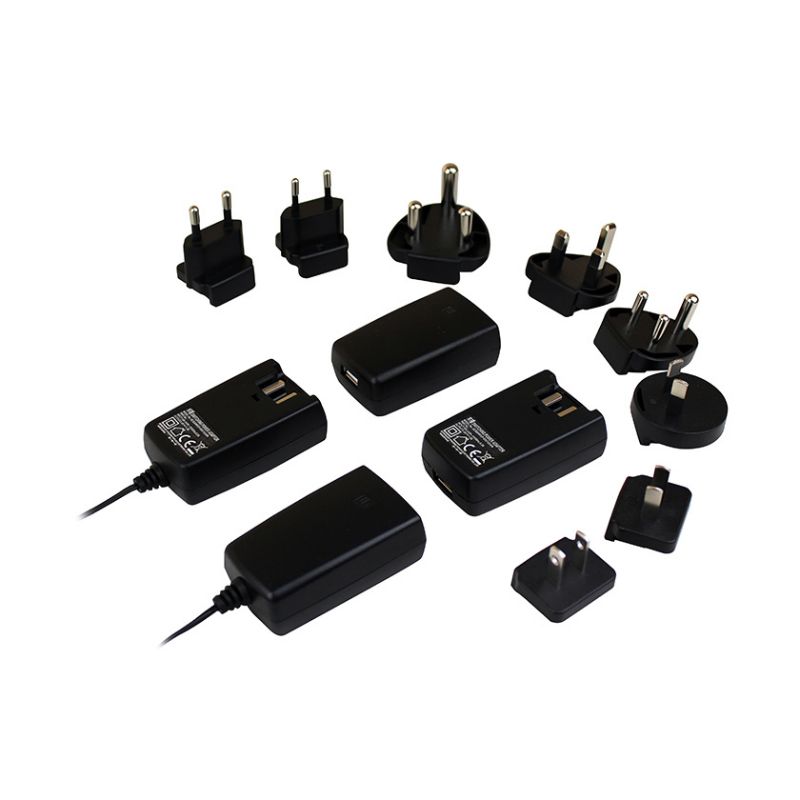AC DC power supplies come in several types, each with distinct features, advantages, and ideal applications. The main types are Linear Power Supplies and Switching Power Supplies, with further subdivisions based on specific design features.
1. Linear Power Supplies
· Description: Linear power supplies use transformers to step down the input AC voltage to a lower AC voltage, then convert it to DC using rectification and filtering.
· Advantages: They provide low noise and ripple-free DC output, making them suitable for sensitive applications.
· Disadvantages: They tend to be larger, heavier, and less efficient, as they generate more heat due to the continuous dissipation of excess energy.
· Applications: Used in audio equipment, lab instruments, and any applications where stable and clean power is critical.
2. Switching Power Supplies (SMPS)
· Description: SMPS converts AC to DC by first rectifying the AC input to DC, then using high-frequency switching to achieve voltage regulation. This switching process allows for a more efficient design.
· Advantages: These power supplies are highly efficient (often over 85%), compact, and generate less heat, allowing for smaller, lighter designs.
· Disadvantages: They produce more high-frequency noise, which may require additional filtering for sensitive applications.
· Applications: Widely used in computers, televisions, industrial equipment, and mobile chargers.
Common Types of Switching Power Supplies:
· Buck Converter (Step-Down Converter): Reduces a higher DC voltage to a lower DC voltage.
· Boost Converter (Step-Up Converter): Increases a lower DC voltage to a higher DC voltage.
· Buck-Boost Converter: Provides both step-up and step-down functionalities, allowing output voltage to be higher or lower than the input voltage.
· Flyback Converter: Suitable for low- to medium-power applications, commonly used in low-cost, compact devices like adapters and chargers.
· Forward Converter: Designed for higher power levels than the flyback converter, often used in industrial equipment and telecommunications.
3. Uninterruptible Power Supplies (UPS)
· Description: UPS units contain both AC DC and DC AC converters and include a battery backup system to provide power in the event of an outage.
· Advantages: Ensures continuous power during outages or voltage drops.
· Disadvantages: UPS systems can be bulky and more expensive.
· Applications: Used in critical systems like data centers, hospitals, and telecom infrastructure where uninterrupted power is essential.
4. Programmable Power Supplies
· Description: These power supplies allow for programmable control of output voltage and current, either via software or external control interfaces.
· Advantages: Offer precision and flexibility in settings, with remote monitoring capabilities.
· Disadvantages: Typically more expensive and complex than standard power supplies.
· Applications: Used in research and development, testing laboratories, and applications requiring highly controlled power settings.
5. Battery-Backup Power Supplies
· Description: These power supplies incorporate rechargeable batteries and provide DC output even in the absence of AC power.
· Advantages: Provide a seamless transition to battery power, ensuring operation during power failures.
· Disadvantages: Limited runtime depending on battery capacity.
· Applications: Critical systems, portable electronics, and emergency equipment.
6. High-Voltage Power Supplies
· Description: Designed to provide high-voltage DC outputs (often several thousand volts).
· Advantages: Essential for powering devices that require high voltage, such as X-ray machines or electron microscopes.
· Disadvantages: Require special handling and design for safety.
· Applications: Medical imaging, scientific research, and industrial equipment.
Each type of AC DC power supply has specific design considerations that make it suitable for particular environments, performance requirements, and budget constraints. The choice of power supply depends on factors like efficiency, size, noise sensitivity, and application-specific demands.







